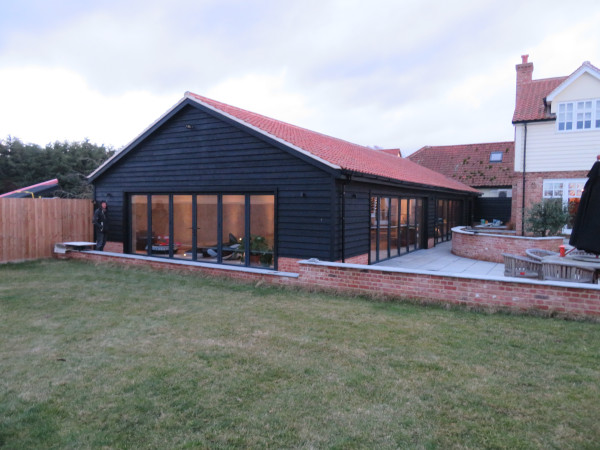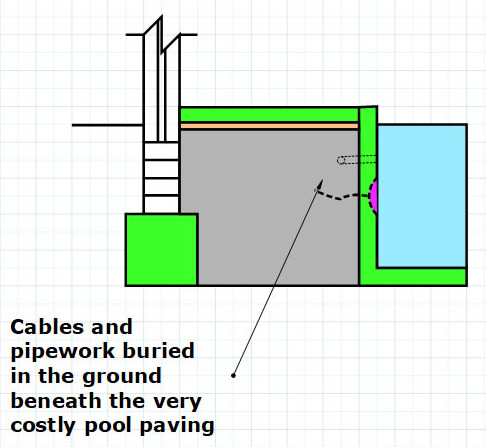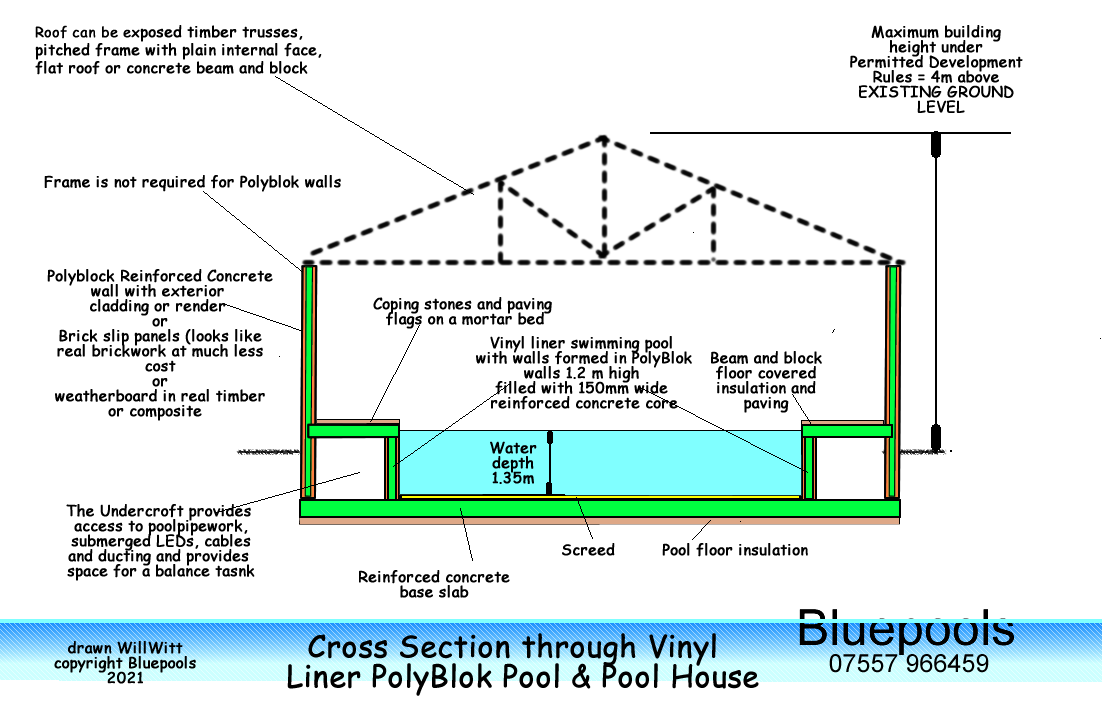Pool Hall Structure

The Traditional Approach
In the past (and often in the present as well!) pool hall buildings have been provided with conventional deep strip foundations around the perimeter and the pool tank was installed in a pit in the ground inside the building (as shown below).
As a result, all the pool fittings and pipework are buried in the soil between the swimming pool and the pool hall foundations. If there is a leak from any of these fittings your expensive pool hall floor will have to be dug up!

Futhermore the ducts required to provide warm dry air to the pool hall glazing has to be provided in ugly overhead ductwork because it is very difficult to protect buried ductwork from rust and corrosion.
The Bluepools Approach
Providing a single flat foundation slab for both the pool and pool hall foundations, as shown here, is no more costly than the traditional method. (Please click on image to enlarge)

I. Bluepools Polybloks (ICF)
For every pool designed, Bluepools prefers to use ICF high density concrete formers that are used to construct massively strong, highly insulated, reinforced concrete Pool & Pool Hall Walls. The ICF forms that Bluepools uses are called Polybloks.
In the construction of indoor pools, Bluepools uses the Polybloks for both the undercroft outer walls and the pool walls. The gap between the pool walls and the basement walls is then covered by a conventional beam and block floor of the type normally used in modern house ground floors.
Polybloks
II. Plant Room for Indoor Pools
It is best to build an indoor pool with the pool hall floor at about 150mm above general ground level so that the pool tank and pool plant rooms are below ground. This is the best design from the aesthetic and usability points of view but the basement (below ground areas) need to be structurally robust, insulated, and may need to be provided with land drainage systems.
The undercroft area around the pool as shown in the sketch above will normally have a headroom of about 1.2m and this is more than adequate for occasional access to the pool pipework.
However, the pool plant room really needs at least 2 metre headroom and so one end of the pool undercroft area will need to be deepened by about 800mm. Or, room needs to be made for a plant room at ground floor level that provides access to the undercroft below it.
Completely safe pedestrian access is absolutely essential for all domestic pool plant rooms as it will be necessary to carry chemicals in large containers from where they are delivered into the pool plant room.
Head over to our Pool Plant Room section for more information:
Pool Plant RoomIII. Pool Hall Walls up to Eaves Level
Cavity Walls need Structural Frames:
Pool hall walls are invariably at least 12m long on the pool hall sides. The cavity wall panels of this length need to be braced every 4.5m to withstand wind loading. As a result, pool halls need to incorporate at least 2 structural frames that can be made from steel or laminated timber.
This results in several disadvantages:
- The frames are too wide to fit inside the 250mm cavity walls and need to extend into the pool hall by about 300mm. This is very unsightly and makes it necessary to increase the pool hall width by 600mm
- Special foundations are needed that obstruct access down the side of the pool in the undfercroft. The connections between frame and foundation need to be made of steel and it is difficult to ensure that corrosion will not occur in the future
- The total cost of these frames is typically several £1000's per frame and this all adds significant cost to the pool hall building
Polyblok walls up to eaves level do not need Structural Frames:
Polyblok (ICF) walls can be taken up to eaves level without frames if a small quantity of reinforcement is provided in the wall.
This provides the following advantages:
- The internal pool hall walls are flat and uninterrupted along their entire length
- The polyblok walls provide the required insulation to meet building regulation requirements
- The polybloks incorporate stainless steel strips 10mm below the surface that can be used to fix anything to both sides using self tapping screws. This allows the waterproof panels required to be fixed to the inside face and cladding or rendering of any type on the outside face (including slip bricks that look exactly like real bricks)
- They are quick and very economic to use and hence make a saving by not requiring bricklayers or the structural frames
ICF Construction
